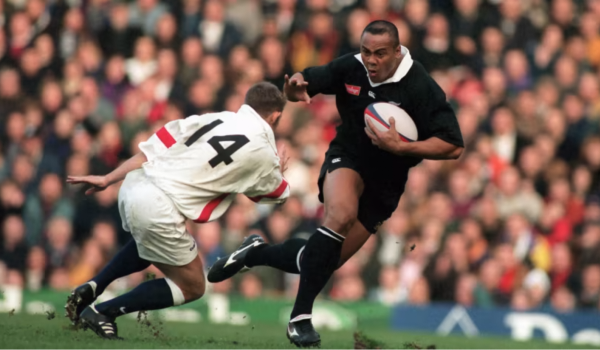Roberto Carlos redefined what it meant to be a defender in football. Known as the ultimate free-kick king, his thundering strikes from long range could turn games in an instant. The most iconic of these, the famous “banana kick” against France in 1997, defied the laws of physics, bending impossibly around the wall and stunning the footballing world. It remains one of the most unforgettable moments in the sport’s history, a testament to his unmatched technique and power.
Carlos wasn’t just a set-piece specialist—he was a two-way dynamo. Defensively, he anchored Brazil’s backline with his tenacity and strength. Offensively, he became an attacking force, bombing down the left flank with incredible pace and delivering pinpoint crosses. His surging runs, combined with his trademark long-range strikes, added an extra layer of unpredictability to his team’s play, making him a constant threat even from deep positions.
A player of unparalleled athleticism and skill, Roberto Carlos proved that defenders could be as impactful as strikers, changing the outcome of matches single-handedly. Whether he was scoring jaw-dropping goals or tirelessly supporting his teammates, his legacy as one of football’s most iconic left-backs is secure.
The Physics Behind Roberto Carlos’ “Banana Kick”
In 1997, Roberto Carlos stunned the football world with his incredible free kick against France, where the ball appeared to defy the laws of physics. The explanation for this “impossible” goal lies in the Magnus Effect, a physical phenomenon that governs the behavior of spinning objects moving through a fluid, such as air.
What is the Magnus Effect?
The Magnus Effect occurs when a spinning object moves through the air, creating a difference in pressure on either side of the object. This difference in pressure generates a force that curves the object’s path.
Here’s how it worked in Roberto Carlos’ kick:
Spin on the Ball: When Carlos struck the ball, he hit it with the outside of his left foot. This imparted a significant counterclockwise spin (from his perspective).
Air Movement Around the Ball:
Curving Path: The difference in pressure between the two sides creates a lateral force, pushing the ball to curve dramatically from left to right.
Key Factors in the Banana Kick
Why Did It Seem to Defy Physics?
To spectators, the ball initially appeared to be flying wide of the goal before it suddenly curved back in. This is because the Magnus Effect causes the curve to become more pronounced as the ball slows down. The combination of spin, speed, and distance created an almost magical trajectory that left everyone in awe.







 Total Users : 2523
Total Users : 2523


